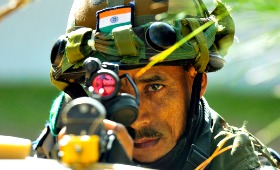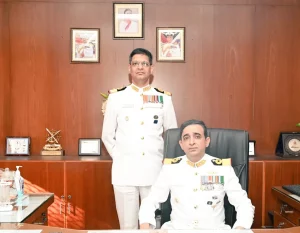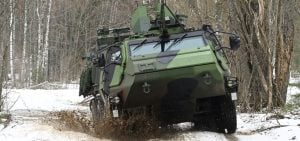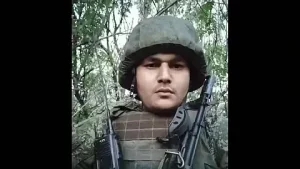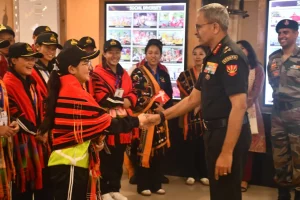AFCAT CDS NDA all entrance exams have general knowledge in common of their syllabus, since they are defence armed forces entrance exam they contain questions based on Indian Armed Forces, In this article we will discuss some facts on Indian Army.
CDS 2 2016 Exam Online Coaching
AFCAT 2 2016 Online Coaching
NDA 2016 Online Coaching
AFCAT CDS NDA General Knowledge Indian Army
The Indian Army has approximately 13 lakhs men and women in its ranks. The President of India is the Supreme Commander of the three services – Army, Navy and Air Force. The Army headquarters is in New Delhi and it is under the direction of the Chief of the Army staff. He is a four star General and is assisted by 8 Lt. Generals who are one vice chief, two deputy chiefs, a military secretary, An adjutant General, the quartermaster general, the master general of ordnance and the engineer in Chief. Two officers have been conferred the rank of field marshal – Field Marshal K M Cariappa and Field Marshal Sam Manekshaw, a 5-star rank and the officer serves as the ceremonial chief. Since independence, the Indian army has been involved in 4 wars with neighboring Pakistan and one with the People’s Republic of China. Other major operations undertaken by the army include Operation Vijay – Kargil War in 1999, Operation Meghdoot – to gain control over Siachen Glacier in 1984 and Operation Cactus – to stop a Military Coup in Maldives in 1988.
- Roles of the Indian Army
Its primary mission is to ensure the national security and safeguard sovereignty, territorial integrity and unity of India from external aggression and threats.
Secondary roles include providing humanitarian support and aid to civil authority during calamities and natural disasters.
- Flag of the Indian Army
- Commands of the Indian Army
The commands of Indian Army is divided in to 6 operational and 1 training command each headed by Lt. General:
- Central Command: headquartered at Lucknow, Uttar Pradesh
- I Corps — Currently assigned to South Western Command
- Eastern Command: headquartered at Kolkata, West Bengal
- 23rd Infantry Division headquartered at Ranchi
- III Corps, headquartered at Dimapur, Nagaland
- IV Corps, headquartered at Tezpur, Assam
- XXXIII Corps, headquartered at Siliguri, West Bengal
- Northern Command: headquartered at Udhampur, Jammu and Kashmir
- XIV Corps, headquartered at Leh, Jammu and Kashmir
- XV Corps, headquartered at Srinagar, Jammu and Kashmir
- XVI Corps, headquartered at Nagrota, Jammu and Kashmir
- Southern Command: headquartered at Pune, Maharashtra
- 41st Artillery Division, headquartered at Pune, Maharashtra
- XII Corps, headquartered at Jodhpur, Rajasthan
- XXI Corps, headquartered at Bhopal, Madhya Pradesh
- South Western Command: headquartered at Jaipur, Rajasthan
- 42nd Artillery Division headquartered at Jaipur
- I Corps, headquartered at Mathura, Uttar Pradesh
- X Corps, headquartered at Bhatinda, Punjab
- Western Command: headquartered at Chandimandir
- 40th Artillery Division headquartered at Ambala
- II Corps, headquartered at Ambala, Haryana
- IX Corps, headquartered at Yol, Himachal Pradesh
- XI Corps, headquartered at Jalandhar, Punjab
- Training Command: headquartered at Shimla, Himachal Pradesh
Organisation of the Indian Army
The Army is Organised in Two Parts:
- Arms:
- Indian Infantry Regiments
- Armoured Corps Regiments – The Armoured Corps Centre and School is at Ahmednagar.
- Regiment of Artillery – The School of Artillery is at Devlali near Nasik.
- Corps of Signals – Military College of Telecommunication Engineering (MCTE), Mhow is a premiere training institute for the officers of the Corps of Signals. The corps also has two Signal Training Centres at Jabalpur and Goa.
- Corps of Engineers – The College of Military Engineering is at Dapodi, Pune. The centres are located as follows – Madras Engineer Group at Bangalore, Bengal Engineer Group at Roorkee and Bombay Engineer Group at Khadki, Pune.
- Corps of Army Air Defence — Centre at Gopalpur in Odisha.
- Mechanised Infantry – Regimental Centre at Ahmednagar.
- Army Aviation Corps(India) – Their training establishment, Combat Army Aviation Training School, is based in Nasik.
- Intelligence Corps – Centre at Pune
- Services:
| Name | Centre |
| Army Dental Corps | Lucknow |
| Army Education Corps | Pachmarhi |
| Army Medical Corps | Lucknow/Pune |
| Army Ordnance Corps | Jabalpur and Secunderabad (HQ) |
| Army Postal Service Corps | Kamptee near Nagpur |
| Army Service Corps | Bangalore |
| Corps of Electronics and Mechanical Engineers | Secunderabad |
| Corps of Military Police | Bangalore |
| Intelligence Corps | Pune |
| Judge Advocate General’s Department | Institute of Military Law Kamptee, Nagpur |
| Military Farms Service | Military Farms School and Centre, Meerut Cantonment |
| Military Nursing Service | Pune and Lucknow |
| Remount and Veterinary Corps | Meerut |
| Pioneer Corps | Bangalore |
- Formations of the Indian Army
- Division: Each Division is headed by General Officer Commanding (GOC) in the rank of Major General. It usually consists of 15,000 combat troops and 8,000 support elements. Currently, the Indian Army has 37 Divisions including; 4 RAPID (Re-organized Army Plains Infantry Divisions) Action Divisions, 18 Infantry Divisions, 10 Mountain Divisions, 3 Armored Divisions and 2 Artillery Divisions. Each Division composes of several Brigades.
- Brigade: A Brigade generally consists of around 3,000 combat troops with supporting elements. An Infantry Brigade usually has 3 Infantry Battalions along with various Support Arms & Services. It is headed by a Brigadier. In addition to the Brigades in various Army Divisions, the Indian Army also has 5 Independent Armored Brigades, 15 Independent Artillery Brigades, 7 Independent Infantry Brigades, 1 Independent Parachute Brigade,3 Independent Air Defence Brigades, 2 Independent Air Defence Groups and 4 Independent Engineer Brigades. These Independent Brigades operate directly under the Corps Commander (GOC Corps).
- Battalion: A Battalion is commanded by a Colonel and is the Infantry’s main fighting unit. It consists of more than 900 combat personnel.
- Company: Headed by the Major or Captain, a company comprises 120 soldiers.
- Platoon: An intermediate between a company and section, a platoon is headed by a Captain or Lieutenant, or depending on the availability of commissioned officers, even a junior commissioned officer (Subedar). It has a total strength of about 32 troops.
- Section: Smallest military outfit with a strength of 10 personnel. Commanded by a non-commissioned officer of the rank of Havildar or Sergeant.
Ranks and Promotion Structure of the Indian Army
Types of Promotion:
| Acting Promotion in Peace and field concessional Areas. | |
| Substantive
Promotion |
Time Scale (up to Lt Col), Selection Grade (Col and above) |
| Local Rank | Local ranks appropriate to the appointments held may be granted to the officers if considered necessary in terms of DSR Para 88. |
Years of Reckonable Commissioned Service for Acting Promotion:
| Rank to Which Acting
Promotion is Made |
Total Minimum Service
as Commissioned Officer |
Remarks | |
| Captain | 1 year | – | |
| Major | 4 years | 3 years in Field. | |
| Lieutenant Colonel | 7 years | With minimum service of one years in the rank of substantive Major. | |
| Colonel | 8 years & 6 months | With minimum service of two years in the rank (s) of Major and above. | |
| Brigadier | 12 years | With minimum service of three years in rank(s) of Lt. Col and above. | |
| Major General | 20 years | – | |
| Lieutenant General | 25 years | – | |
Years of Reckonable Commissioned Service for Substantive Promotion (Other than AMC/ADC):
| Rank | Major Arms/Service | Vet Officers | MF | SL |
| Capt | 2 | 1 | 2 | 2 |
| Maj | 6 | 7 | 6 | 6 |
| Lt Col | 13 | 17 | 13 | 13 |
| Col(TS) | 26 | – | 26 | 26 |
| Col(Selection) | 15 | 15 | 15 | 15 |
| Brig | 23(22)* | – | – | – |
| Maj Gen | 25(24)* | – | – | – |
| Lt Gen | 28 | – | – | – |
| Gen | No restriction | – | – | – |
- Gallantry Medals of the Indian Army
The medals awarded by President of India for gallantry displayed at the battlefield, in order of precedence, are- Param Vir Chakra, Maha Vir Chakra and Vir Chakra. The medals awarded by the President for gallantry displayed away from the battlefield, in order of precedence, are- Ashoka Chakra, Kirti Chakra and Shaurya Chakra. Many of the recipients of the above awards have been Indian Army personnel.
